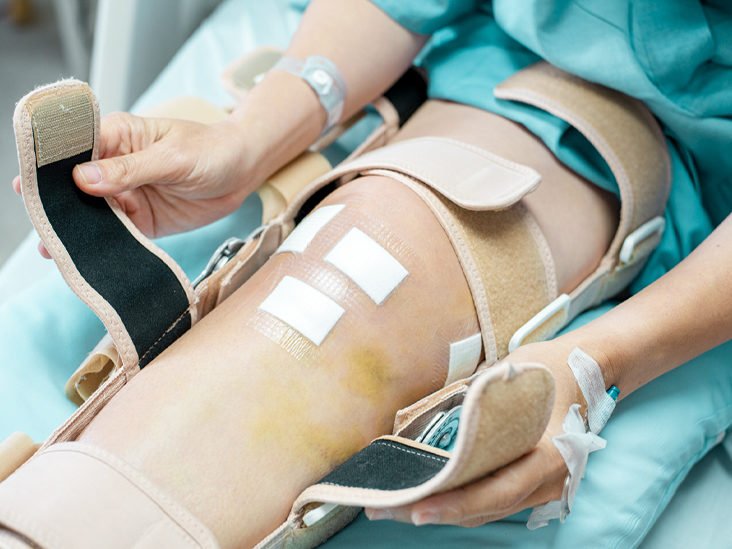Medial Collateral Ligament (MCL)
The medial collateral ligament (MCL) is one of the four ligaments that are critical to maintaining the mechanical stability of the knee joint. The ligamentous sleeve connects the top of the shinbone (tibia) to the bottom of the femur (thighbone). Located outside of the knee joint, this ligament helps hold the bones together and adds stability to the knee.
MCL Tears
Since the MCL resists widening of the inside of the knee joint, the ligament can be injured when the outside of the knee joint is struck or if there is a strong lateral force exerted on the outside of the knee. This force causes the outside of the knee to buckle, and the inside to widen. When the MCL is stretched too far, it is susceptible to tearing and injury. This is the injury can occur when the outside of the knee is struck and is one of the major reasons “chop blocking” is illegal in football.
An injury to the MCL may occur as an isolated injury, or it may be part of a complex injury to the knee. Other ligaments, most commonly the ACL, or the meniscus, may be torn along with an MCL injury.
symptoms
The most common symptom following an MCL injury is pain directly over the ligament. Swelling may appear over the torn ligament, and bruising and generalized joint swelling are also common symptoms within the first few days following injury. In more severe injuries, patients may complain that the knee feels unstable or that it may “give out.”
Symptoms of an MCL injury tend to correlate with the extent of the injury. MCL injuries are usually graded on a scale of I to III.
Grade I MCL Tear: This is an incomplete tear of the MCL. The tendon is still intact and the symptoms are typically minimal. Patients may complain of pain with pressure on the MCL and may be able to return to their sport very quickly. With this grade of MCL tear, the bulk of athletes miss one to two weeks of play.
Grade II MCL Tear: Grade II injuries are also considered incomplete tears of the MCL. These patients may complain of instability when attempting to cut or pivot after the injury. Pain and swelling are more prominent symptoms with this grade. Typically, a period of three to four weeks of rest is necessary following this injury.
Grade III MCL Tear: A grade III injury is a complete tear of the MCL. Patients have significant pain and swelling with this grade of tear, and often have difficulty bending the knee. Instability, or giving out, is a common finding with grade III MCL tears. A knee brace or a knee immobilizer is usually needed for comfort, and healing can take 10 to 12 weeks.
MCL Repair Versus Reconstruction
There are two primary types of MCL surgery: repair and reconstruction. Both types of surgery use an incision along the inside of your knee.
If a repair is indicated, at Aptiva Health, an MCL repair is conducting utilizing the MCL InternalBrace™ technique, which consists of a 2 mm-wide FiberTape® suture that spans the distance between two Knotless SwiveLock® anchors. For additional details regarding this procedure, please visit this link.
Medial collateral ligament reconstruction is indicated in patients with chronic MCL instability despite appropriate nonsurgical treatment. MCL reconstruction may be necessary in patients that fail to heal properly with residual knee instability. These cases are often associated with other ligament injuries. If surgery is required, a ligament repair may be performed, with or without reconstruction with a tendon graft; depending on the location and severity of the injury.







